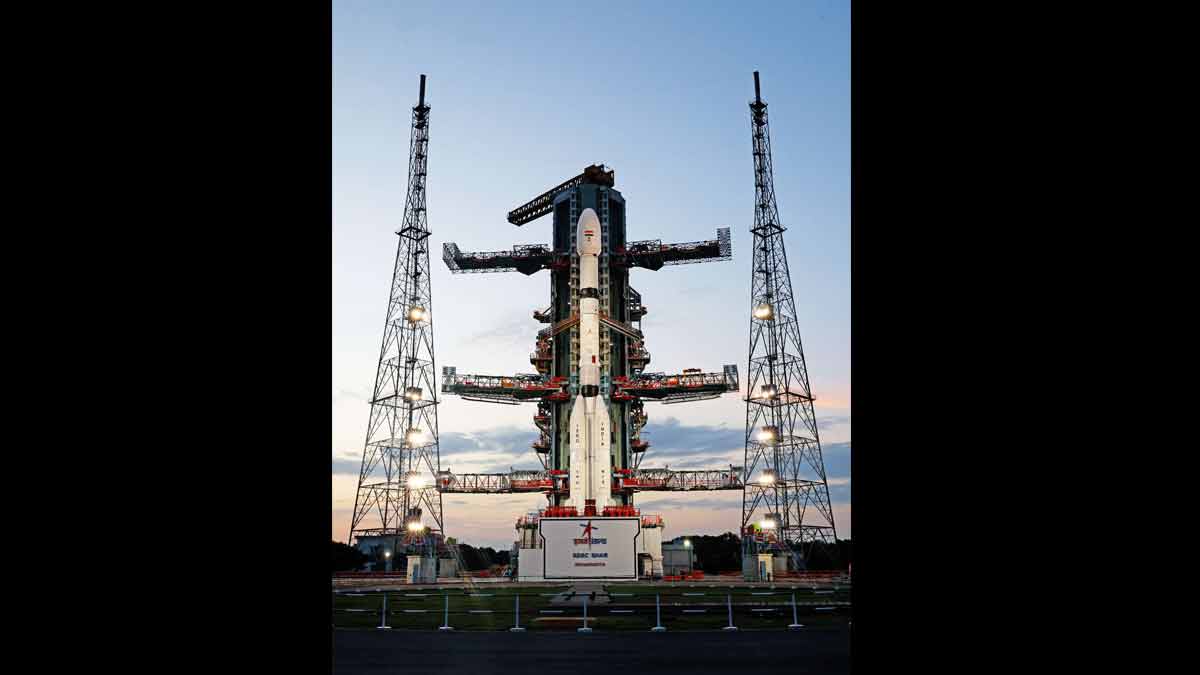NASA-ISRO NISAR satellite launch: Countdown progressing; check lift-off time and latest details
 GSLV-F16 rocket which will carry NISARsatellite into orbit | X/ISRO
GSLV-F16 rocket which will carry NISARsatellite into orbit | X/ISRO
The Synthetic Aperture Radar (NISAR) satellite, jointly developed by NASA and ISRO, is all set to launch on Wednesday aboard India's GSLV-F16 rocket from the Satish Dhawan Space Centre in Sriharikota.
The launch has been scheduled for 5.40 pm while the countdown commenced at 2.10 pm on Tuesday.
"GSLV-F16/NISAR Today's the day! Launch Day has arrived for GSLV-F16 and NISAR. GSLV-F16 is standing tall on the launch pad. NISAR is ready. Liftoff today," ISRO said in a post on X.
The primary objectives of the mission are to study land and ice deformation, land ecosystems, and oceanic regions in areas of common interest to the US and Indian science communities.
The mission is also expected to help measure the woody biomass and its changes, track changes in the extent of active crops and understand the changes in wetlands’ extent.
It could also help in mapping Greenland’s and Antarctica’s ice sheets, and the dynamics of sea ice and mountain glaciers.
The mission will be aided with ground station support of both ISRO and NASA for downloading of the acquired images, which, after the necessary processing, will be disseminated to the user community, the Indian space agency said in a statement.
The NISAR mission combines the technological expertise of both agencies. NASA has contributed the L-Band Synthetic Aperture Radar (SAR), a high-rate telecommunication subsystem, GPS receivers, and a deployable 12-meter unfurlable antenna.
ISRO, on its part, has provided the S-Band SAR payload, the spacecraft bus to accommodate both payloads, the GSLV-F16 launch vehicle, and all associated launch services.
According to the Department of Space, the satellite weighs 2,392 kg and will be placed in a sun-synchronous orbit, offering repeat imaging of the entire Earth’s land and ice surfaces every 12 days.
The event marks a defining moment in the journey of Indo-US space cooperation as well as in ISRO's overall international collaborations, said Union Minister Dr Jitendra Singh early this week.
Singh, who has been monitoring the mission closely, claimed that the launch reflects the maturing of strategic scientific partnerships and India’s emergence as a credible global player in advanced Earth observation systems.
“This mission is not just about a satellite launch—it is a moment that symbolises what two democracies committed to science and global welfare can achieve together. NISAR will not only serve India and the United States but will also provide critical data for countries around the world, especially in areas like disaster management, agriculture, and climate monitoring,” he said.
Sci/Tech